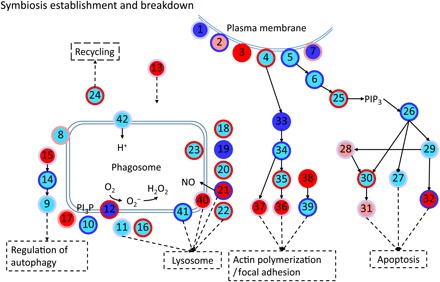Fig. 5. Schematic diagram of symbiosis establishment– and breakdown-associated genes.

Every node represents a category of genes and generally has multiple corresponding genes. The inside colors of nodes represent the expression changes of corresponding genes, including non-DEGs (cyan), up-regulated (red), down-regulated (blue), and up- and down-regulated DEGs (light red). The colors of node edges represent the methylation level changes of corresponding genes, including non-DMGs (light blue), hypermethylated (red), hypomethylated (blue), and hypermethylated and hypomethylated DMGs (light red). Numbers in circles denote genes/proteins: 1, complement receptor; 2, scavenger receptor; 3, C-type lectin; 4, integrin; 5, Toll-like receptor; 6, Ras-related C3 botulinum toxin substrate 1 [RAC1; Ras homolog (Rho) family]; 7, collagen; 8, vesicle-associated membrane protein; 9, autophagy-related protein 16 (ATG16); 10, Ras-related protein 5 (Rab5); 11, Rab7; 12, reduced form of nicotinamide adenine dinucleotide oxidase; 13, syntaxin 12; 14, ATG5; 15, ATG10; 16, programmed cell death 6–interacting protein; 17, sorting nexin (SNX); 18, cytoplasmic dynein; 19, tubulin alpha chain; 20, tubulin beta chain; 21, nitric oxide synthase (NOS); 22, lysosome-associated membrane glycoprotein/cluster of differentiation; 23, cathepsin L; 24, kinesin; 25, phosphatidylinositol 4,5-bisphosphate 3-kinase; 26, RAC serine/threonine-protein kinase; 27, B cell lymphoma 2 (Bcl-2) antagonist of cell death; 28, tumor necrosis factor receptor–associated factor; 29, NF-κB; 30, caspase-8 (CASP8); 31, CASP7; 32, apoptosis regulator/Bcl-2 (BCL2); 33, Rho; 34, Rho-associated protein kinase; 35, phosphatidylinositol 4-phosphate 5-kinase/phosphatidylinositol 5-phosphate 4-kinase/phosphatidylinositol 3-phosphate 5-kinase; 36, vinculin; 37, radixin; 38, profilin; 39, actin; 40, CD63; 41, lysosomal-associated transmembrane protein; 42, V-type proton adenosine triphosphatase (ATPase); PI3P, phosphatidylinositol-3-phosphate; PIP3, phosphatidylinositol (3,4,5)-trisphosphate.
